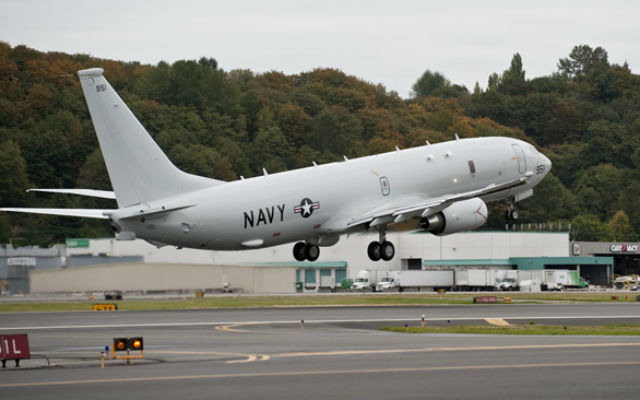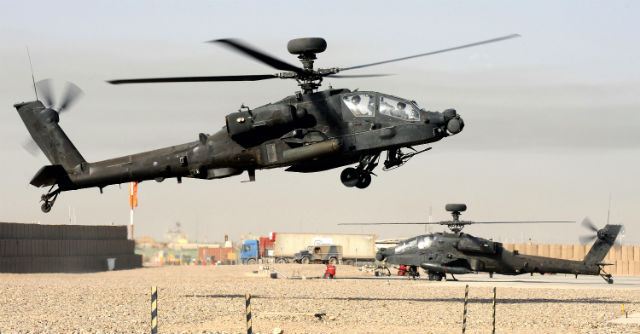The island state of the UK is positioned – both politically and geographically – within a number of ongoing international conflicts.
Its placing within NATO and the impact of tensions in the eastern part of Europe – as Russia continues to advance – make it a target for Russian aggression as the alliance and the UK continue to condemn its actions and impose sanctions on Moscow.
Russian military aircraft have flown too close to UK airspace for comfort in recent months, requiring the Royal Air Force to scramble Eurofighter Typhoons to escort the aircraft away from its territory.
Further south, the threat from Islamic State militants as they spread throughout Iraq, Syria and Egypt has led to UK involvement in an air strike campaign against the insurgents in an effort to contain the group, plus involvement in training Iraqi forces on the ground.
With this in mind, British forces are anticipating the release of the government’s Strategic Defence and Security Review (SDSR) in 2015, which should shed light on the future of a number of capabilities over the next five years.
“Conflicts of the past decade – Afghanistan, Iraq and more recently Libya – have shown the limitations of Western intervention,” the Royal United Services Institute says in an SDSR 2015 summary. “Such conflicts pose difficult questions for future operations overseas; while short, sharp interventions may be more politically palatable than protracted stabilisation operations, strategic failure is in nobody's interest.”
The fight against Islamic State extremists has already arguably affected the SDSR, as a Panavia Tornado GR4 squadron was reprieved ahead of its planned retirement in order to fill a weapon capability gap in the Typhoon fleet.
UK Prime Minister David Cameron announced on 3 October that the RAF Marham-based 2 Sqn will continue to operate the Tornado until March 2016; it had previously been expected to stand down in March 2015, following the completion of the UK’s combat involvement in Afghanistan. On 9 January, this was rebadged as 12 Sqn, with the 2 Sqn name transferred to a Typhoon unit.
The period after the government's SDSR of 2010 was expected to be one of recuperation for British forces, in terms of it being a conflict-free time in which forces could train and recover, but threats such as those posed by Russia have somewhat altered this.
The 2010 SDSR was released during a time of economic pressure in the UK, which led to a number of programme cuts. One of the most significant was the cancellation of the BAE Systems Nimrod MRA4 maritime patrol aircraft (MPA).
Russia has demonstrated the need for a UK at-sea surveillance capability, as it carries out flights over British waters, highlighting the gap that has been created as a result of the Nimrod cancellation.
“We’re now at the point where we’re looking at it quite carefully again, but only because fundamentally we’re an island nation without maritime patrol aircraft – it just doesn’t hang together very well and it doesn’t tell a very good story,” Douglas Barrie, senior fellow for military aerospace at the International Institute for Strategic Studies, tells Flight International.
A decision on an MPA is therefore expected to surface in the upcoming SDSR, but the path that the UK is expected to take remains unclear.
It could follow in the footsteps of the US Navy, Indian navy and Royal Australian Air Force, with the procurement of the technologically high-end Boeing P-8 Poseidon, complete with its anti-submarine and anti-surface warfare capabilities, or a more affordable aircraft, such as the Airbus Military C295.

Boeing
Barrie says the Nimrod was a capable anti-submarine warfare aircraft, and ideally a replacement would match this. Although expensive, this would point towards the 737-800-derived P-8.
“That will be measured up against what deals are on the table and what are the ways in which you could fit what is going to be an expensive requirement into the budget,” Barrie adds.
Through the UK’s “Seedcorn” initiative, personnel from its armed forces have undergone training alongside the US Navy to increase operational readiness, which has included training on the P-8 as well as the Northrop Grumman MQ-4C Triton unmanned air vehicle. Other Seedcorn initiatives include allocating personnel to Lockheed P-3 Orions flown by Australia, Canada and New Zealand.
While the nations on both sides of the Atlantic have continually affirmed that the UK's P-8 involvement does not determine which procurement path the UK will take, it certainly does ensure that the RAF would be ready to operate such an aircraft.
As the UK does with its Boeing RC-135W Rivet Joint and Boeing C-17 strategic transport fleets, it could tap into the support network that the USA has established for the P-8, making it a logistically appealing option.
“I think all of the other options in the mix would really reflect the pressure on funding,” Barrie notes. “To move away from a top-end solution would simply be driven by funding constraints. It’s a question of capability – what kind of roles do we see ourselves playing in the world?”
Elsewhere, the UK’s attack helicopter fleet is at risk of facing obsolescence problems if it is not replaced or upgraded.
The British Army’s Boeing/AgustaWestland Apache AH1s will either need to be replaced with the new AH-64E Apache or another entirely new model of attack helicopter, or the current type could have obsolescent equipment replaced with up-to-date systems.

Crown Copyright
“It’s been on the [defence] minister’s desk for quite some time,” Barrie says, adding that a new type of rotorcraft would be the least likely option.
“The safe bet is on an Apache-derived solution, but it is how you do that. Do you try and reuse some of the kit that you already have in the aircraft, or do you buy straight off the [AH-64E] line in the US?
“We need to get this moving. The fleet very quickly dwindles in terms of that obsolescence issue – it’s a sooner rather than later decision, so I would have thought that they’d have to get that done during SDSR.”
One new procurement for the UK is the Lockheed Martin F-35 Lightning II, with a solid commitment for 48 short take-off and vertical landing aircraft. The UK has so far ordered four F-35Bs to support initial operational test and evaluation and training, and confirmed orders for its first 14 fully operational examples.
“Somewhere in the 2015-2020 timeline, you would hope that we would be placing follow-on orders for the next tranche of aircraft to come through,” Barrie notes, hinting at a possible reference to future numbers in the SDSR.
It is possible, therefore, that an indication will be made regarding future numbers and what is planned past the first 48 aircraft. The Tornado GR4 fleet is expected to have been fully retired by 2019, so more indication is needed regarding what is going to happen to the RAF’s offensive fixed-wing fleet past this point.
Ultimately, the UK has the fifth-largest defence budget in the world, and is far enough ahead of sixth-ranked France to remain that way for some years. But as the country tries to retain its place as a capable military power, the realisation of its capabilities could make this stance questionable.
“Given the level of ambition that we’ve currently got to remain a full-spectrum, capable, medium-sized power, five squadrons of Typhoons and 48 F-35s split notionally between the air force and the navy does not seem to be enough by quite some distance,” Barrie says.
A potential change of government in the UK’s 7 May general election makes this an even more interesting time. At this pivotal point in decision-making, following what was considered by some as hasty activity in the last SDSR, both industry and the British defence forces will be anticipating the release of the new planning document, with significant decisions expected to be made.
Source: Flight International



















